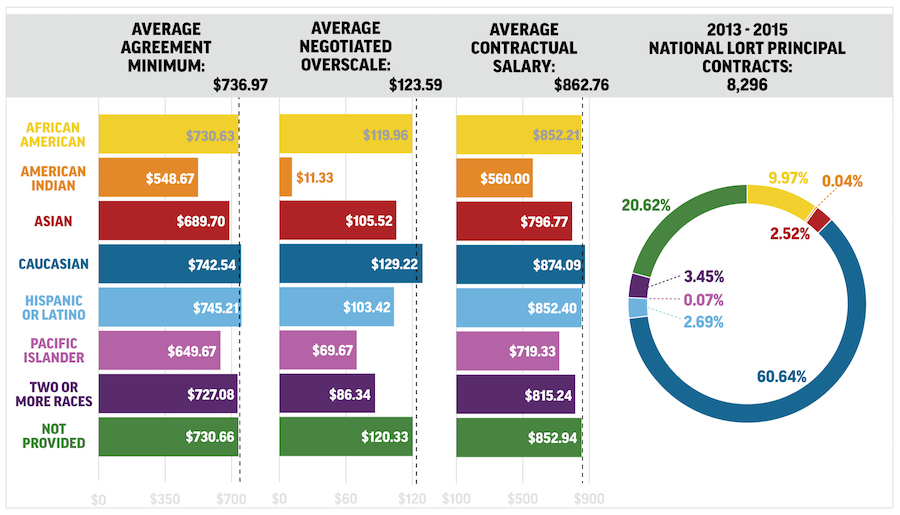NEW YORK CITY: Actors’ Equity Association (AEA) has released the findings of a new diversity study, which analyzed the makeup of actors and stage managers nationally from 2013 to 2015. It found that, white men made up the majority of all acting and stage management contracts, out of 63,603 contracts. In addition, women regularly commanded lower salaries than men.
“This study came about because our Council made diversity and inclusion a priority, and our staff spent months working on the data,” said AEA executive director Mary McColl in a statement. “With this study, we can take an empirical look at hiring biases in our industry. Women and members of color have fewer work opportunities, and when they do get hired, they often are hired on lower-paying contracts. Equity has fought for diversity and inclusion at the bargaining table for years. What we learned with this study is that we won’t negotiate our way out of this problem. We need an industry-wide conversation about how we can change the stage.”
The study examined productions that took place between 2013 and 2015. In addition to the overall breakdown, AEA included a sub-breakdown of League of Resident Theatres (LORT) contracts, some of the highest nonprofit contracts in the business.
For principal roles in plays, out of 30,452 contracts: male actors made up 61 percent, female actors made up 39 percent. There was a bit more parity in musicals. Out of 14,834 musical contracts, male actors occupied 59 percent of the contracts; female actors made up 41 percent. Out of 11,632 stage manager contracts, men received 66 percent and women received 34 percent.
A majority of acting roles in the U.S. are for non-musical plays. The racial breakdown for principal actors in these plays: Caucasians at 66 percent, African Americans at 9 percent, Latinx at 2 percent, and Asians at 2 percent. For principal roles in musicals, Caucasians held 71 percent, African Americans had 8 percent, Latinx had 2 percent, and Asians had 2 percent. There are even fewer people of color in stage management positions, with Caucasians at 74 percent, African American at 2 percent, Latinx at 3 percent, and Asians at 1 percent.
A similar discrepancy was found in LORT contracts. Out of 8,296 LORT play contracts, for principal roles: men made of 61 percent of contracts, while women made up 39 percent. Out of 2,196 musical contracts, men made up 59 percent and women made up 41 percent. But for LORT stage managers (2,749 contracts), women actually held more contracts, at 65 percent, and men at 35 percent.
These numbers are similar to the studies released by the New York City-based Asian Americans Performers Action Coalition, which found that on Broadway and Off-Broadway, white actors made up a majority of all roles, chorus and principal.

What sets the AEA study apart is its analysis of how much its members are getting paid. Though all contracts have a minimum weekly salary, men usually were able to negotiate for a higher rate than women. For example, for LORT plays, women were usually hired for lower-tiered salaries than men, so their average contract minimum was $735.65 compared to $749.47 for men. Women also negotiated slightly less overscale than men, earning contractually less than men by about $15. And when those numbers were broken down by race, white actors in LORT plays received $874.09 a week on average, while African-American actors were paid $852.21, Latinx actors $852.20, Asian actors $796.77, and Native American actors $560. This showed that white, African-American, and Latinx actors usually were hired at a higher tiered LORT salary than Asian or Native American actors.
The complete study can be read here. In addition, AEA released a separate demographic study for Broadway and Off-Broadway contracts, whose data can be found here.
The study comes out shortly after the news that AEA has hired its first diversity director: Nicole Smart.


